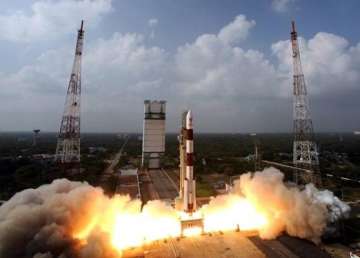New Delhi: ‘Mangalyaan', India's first Mars-bound spacecraft, is all set create history this morning when it will enter into the orbit of the Red Plant.
Scientist at the Indian Space Research Organistion (ISRO) erupted into joy on Monday afternoon when they successfully test fired the 440 Newton Liquid Apogee Motor (LAM) engine of the spacecraft for four seconds, a move that raised the confidence level of Indians about the success of Rs Rs 450 crore mission. The engine was in sleep mode for the last 300 days.
Expressing joy after the engine of the ‘Mangalyaan' was reignited, ISRO Chief K Radhakrishnan said that scientists are well prepared for the crucial operation to take place on Wednesday morning.
Soon after its insertion into the Mars orbit, the ISRO will activate the Mars Colour Camera (MCC) and get the first images of the Red Planet by afternoon. This tri-colour MCC will give images and information about the surface features and composition of Martian surface. This will help scientists to monitor the dynamic events and weather of the planet. The images will be received by ISRO's Indian Deep Space Network (IDSN) in Byalalu, Karnataka.
The spacecraft is also carrying a Methane sensor. It will map the Martian surface, study the atmosphere and search for methane gas, a sign that the planet can support life.
It should be noted that probes to Mars have a high failure rate. Of the 51 missions so far, only 21 have succeeded. In November 2011, a Russian mission carrying the Chinese satellite, Yinghuo-1, to Mars failed. Japan also failed in a similar effort in 1998.
If India succeeds tomorrow morning, it will be the first country to enter the Mars orbit on a maiden mission. It will also be the first Asian country and ISRO the fourth space agency to send a satellite to the Red Planet. European, US and Russian probes have managed to orbit or land on the planet, but after several attempts.
The 1.3-tonne Mars Orbiter Mission (MOM) was launched on November 5, 2013 by India's workhorse Polar Satellite Launch Vehicle (PSLV) from the spaceport of Sriharikota in Andhra Pradesh.
On a 666 million km journey, the spacecraft escaped the earth gravity pull on December 1, 2013.
Latest India News
